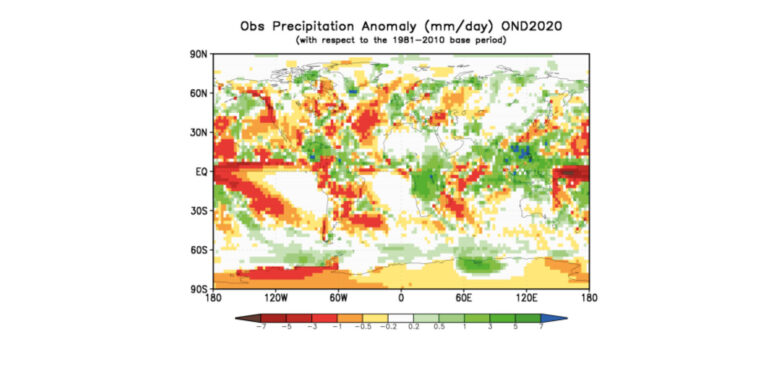According to the World Meteorological Organization (WMO) the 2020-2021 La Niña event has passed its peak but impacts on temperatures, precipitation and storm patterns continue. Despite the general cooling influence of La Niña events, the WMO expects land temperatures to be above normal for most parts of the globe in February-April 2021.
The WMO notes that La Niña appears to have peaked between October and November 2020, as a moderate strength event, but says there is a 65% likelihood that it will persist during February-April, with a 70% chance that the tropical Pacific will return to ENSO-neutral conditions by the April-June 2021 season, according to WMO’s El Niño-La Niña Update.
“El Niño and La Niña are major drivers of the Earth’s climate system. But all naturally occurring climate events now take place in the context of human-induced climate change, which is increasing global temperatures, exacerbating extreme weather, impacting seasonal rainfall patterns and complicating disaster prevention and management,” said WMO Secretary-General Prof. Petteri Taalas.
“Thanks to our ability to predict La Niño and El Niño events in advance, the WMO community has been able to strengthen its support to governments, the United Nations, and stakeholders in climate sensitive sectors to mobilize preparations and save lives.”
La Niña has a temporary global cooling effect, but this was not enough to prevent 2020 from being one of the three warmest years on record. The WMO points out that La Niña and El Niño effects on average global temperature are typically strongest in the second year of the event, but it remains to be seen to what extent the current La Niña will influence global temperatures in 2021.



